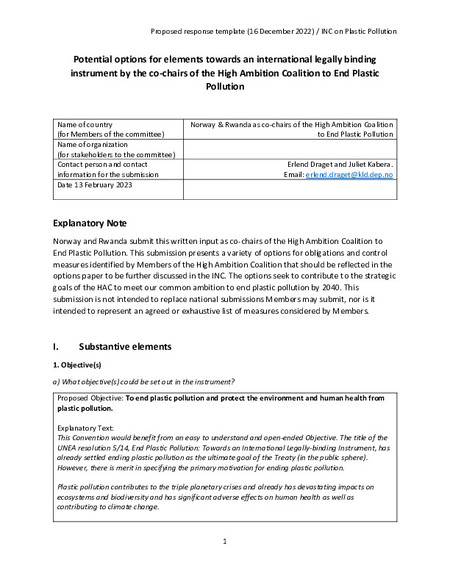| dc.contributor | Economy Division | en_US |
| dc.contributor.author | United Nations Environment Programme | en_US |
| dc.contributor.author | United Nations Office for the Coordination of Humanitarian Affairs | en_US |
| dc.contributor.other | Partow, Hassan | en_US |
| dc.contributor.other | Lacroix, Camille | en_US |
| dc.contributor.other | Le Floch, Stephane | en_US |
| dc.contributor.other | Alcaro, Luigi | en_US |
| dc.coverage.spatial | Sri Lanka | en_US |
| dc.date.accessioned | 2021-08-08T23:13:35Z | |
| dc.date.available | 2021-08-08T23:13:35Z | |
| dc.date.issued | 2021 | |
| dc.identifier.uri | https://wedocs.unep.org/20.500.11822/36608 | |
| dc.description | On 20 May 2021, chemical fume emissions erupted on the Singapore-flagged MV X-Press Pearl containership as it anchored around 9 nautical miles (17 kilometres) northwest of the Port of Colombo in Sri Lanka national waters. An unknown number of containers, some of which carrying dangerous chemicals and plastic pellets, reportedly fell overboard as an intense fire broke out and explosions occurred on 25 May. Once the fire was under control around a week later, an effort to tow the vessel on 2 June to a deeper water refuge failed and resulted in partial sinking of the vessel.
The objectives of this environmental emergency mission were to support to the Government of Sri Lanka in responding to the MV X-Press Pearl incident. Specifically, key aims of the mission include:
1. Advise the Environmental Damage Assessment team coordinated by MEPA on the design and implementation of an environmental assessment over the short and longer terms; 2. Advise MEPA on the measures to be taken to prevent, respond and mitigate risks from the incident including from: a) bunker fuel oil spill containment and clean-up; b) shoreline clean-up of plastic pellets and other debris; and c) salvage of the ship wreck and lost containers.
3. Provide longer-term recommendations on strengthening national preparedness and incident management capacity to deal with future maritime disasters; 4. Identify additional expertise needed to address the impacts of the incident and link national counterparts with relevant networks and partners including accredited international laboratories. 5. Brief the government and international partners on the evolving situation and needs for immediate emergency response and longer-term recovery.
The UN mission to Sri Lanka took place from 16 – 30 June 2021. The team operated under a ‘bio-secure bubble’ protocol due to COVID-related restrictions and was thereby able to hold meetings and conduct site visits almost immediately on arrival (Annex IV – Key Stakeholders Consulted). | en_US |
| dc.format | Text | en_US |
| dc.language | English | en_US |
| dc.rights | Public | en_US |
| dc.subject | oil pollution | en_US |
| dc.subject | chemical pollution | en_US |
| dc.subject | marine pollution | en_US |
| dc.subject | plastic waste | en_US |
| dc.subject | pollution | en_US |
| dc.subject | environmental impact assessment | en_US |
| dc.subject | transboundary environmental impact | en_US |
| dc.subject | air pollution | en_US |
| dc.subject | marine fauna | en_US |
| dc.subject | fishery resource | en_US |
| dc.subject | environmental monitoring | en_US |
| dc.subject | Sri Lanka | en_US |
| dc.title | X-Press Pearl Maritime Disaster: Sri Lanka - Report of the UN Environmental Advisory Mission | en_US |





